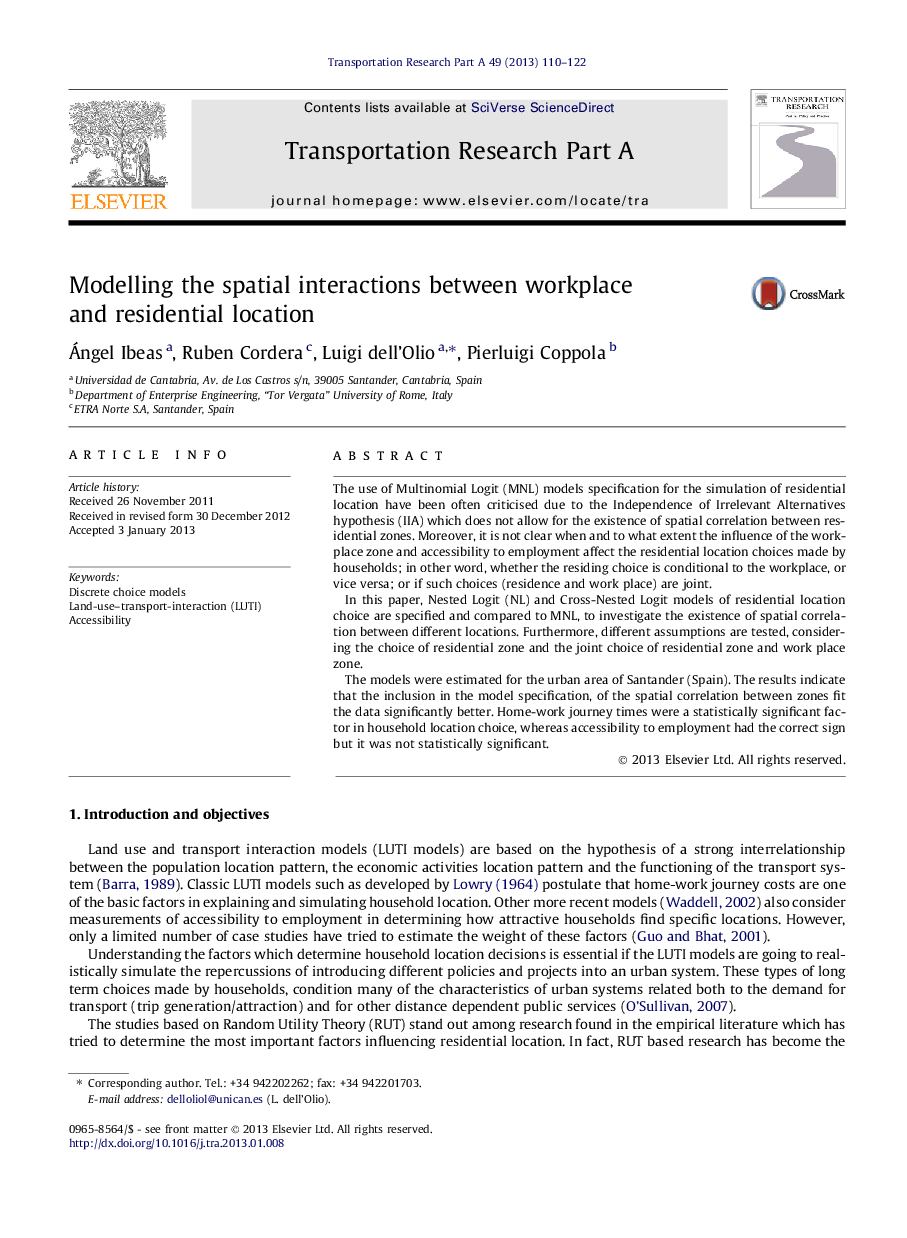| Article ID | Journal | Published Year | Pages | File Type |
|---|---|---|---|---|
| 311272 | Transportation Research Part A: Policy and Practice | 2013 | 13 Pages |
The use of Multinomial Logit (MNL) models specification for the simulation of residential location have been often criticised due to the Independence of Irrelevant Alternatives hypothesis (IIA) which does not allow for the existence of spatial correlation between residential zones. Moreover, it is not clear when and to what extent the influence of the workplace zone and accessibility to employment affect the residential location choices made by households; in other word, whether the residing choice is conditional to the workplace, or vice versa; or if such choices (residence and work place) are joint.In this paper, Nested Logit (NL) and Cross-Nested Logit models of residential location choice are specified and compared to MNL, to investigate the existence of spatial correlation between different locations. Furthermore, different assumptions are tested, considering the choice of residential zone and the joint choice of residential zone and work place zone.The models were estimated for the urban area of Santander (Spain). The results indicate that the inclusion in the model specification, of the spatial correlation between zones fit the data significantly better. Home-work journey times were a statistically significant factor in household location choice, whereas accessibility to employment had the correct sign but it was not statistically significant.
► Multinomial Logit is based on the Independence of Irrelevant Alternatives hypothesis. ► Choice of residential zone and the joint choice of residential and workplace zone. ► Nested and Cross-Nested Logit models of residential location choice vs. Multinomial Logit. ► New models for residential and workplace location choice in LUTI models. ► Inclusion of the correlation between zones fit the data significantly better.
